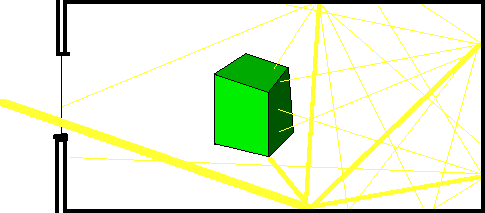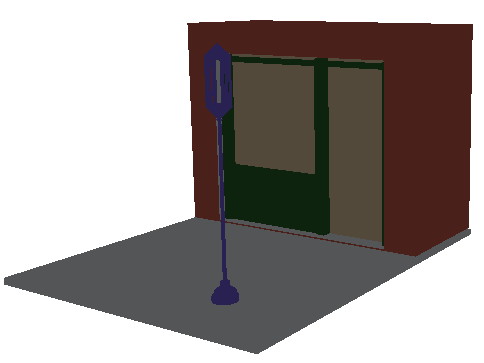TAPESTRY: The Art of Representation and Abstraction
Shading - Ambient
The Problem

In the real world we can still see the bottoms of tables and the "dark sides" of objects (the side away from any obvious source of illumination). The light by which we see these may have been reflected numerous times, off of many different surfaces in the room. Some of it ends of on the "back" side of objects, and is reflected from there to our eyes.
In most digital renderings, on the other hand, only the light directly incident on each surface is considered, without taking into account multiple diffuse reflections. Under these circumstances the sides of any object which face away from the light are not just dark, they are black (i.e., without light). The stark contrast between illuminated and unilluminated parts of the model is not desirable, but simulating the actual interreflections between surfaces would add tremendously to calculation time.
The Solution: Ambient Light
The ambient lighting term is a "fudge factor". It approximates the effects of light reflecting around within the environment. It does this by applying some light (a constant amount) to all surfaces.Scenes rendered entirely in ambient light, and without drawing polygon edges, are uncommon because they do not reveal surface orientation, as seen in the sample image below. However, some ambient light helps reveal surfaces which are not directly illuminated.
Sample

Rendered at 50% ambient intensity (normal values being around 10-15%) using form•Z RenderZone.
Last updated: April, 2014
